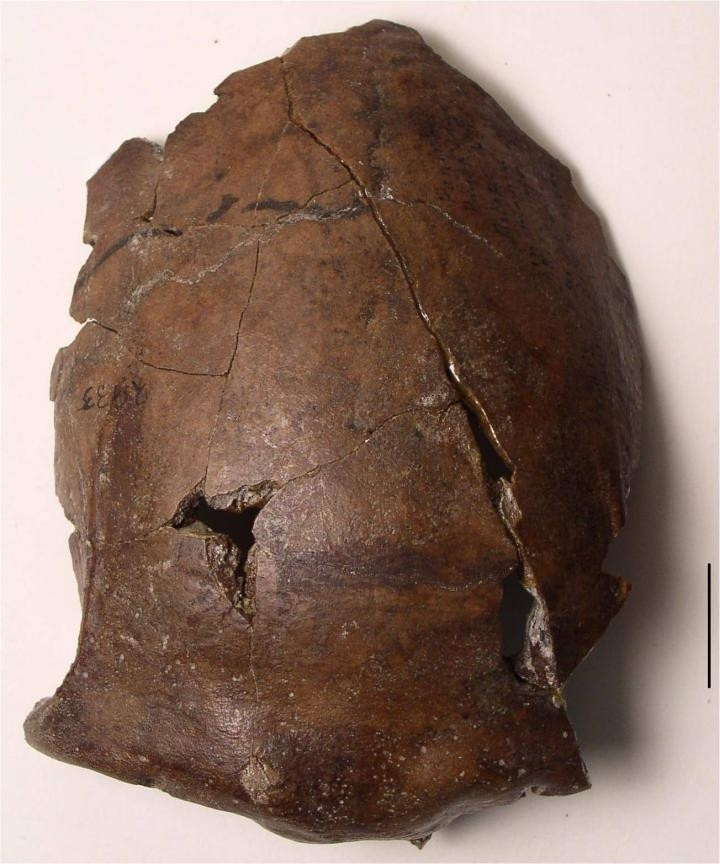This 6,000-year-old human skull belongs to the world's earliest known tsunami victim
New research has re-examined the skull which was first discovered in Papua New Guinea in 1929.

New analysis has found that a 6,000-year-old skull discovered at a site in Papua New Guinea in 1929 most likely belonged to the world's earliest known tsunami victim.
The partially preserved skull was first discovered about 12 kilometres inland from the northern coast of Papua New Guinea, near the town of Aitape.
"We have discovered that the place where the Aitape Skull was unearthed was a coastal lagoon that was inundated by a large tsunami about 6000 years ago, similar to the one that struck nearby with such devastating effect in 1998, killing more than 2000 people," said James Goff, first author of the study from the University of New South Wales Sydney (UNSW)
The study detailing the new analysis of the skull is published in the journal PLOS ONE and was the result of an international collaboration between researchers from UNSW Sydney, the Field Museum of Natural History and the University of Notre Dame in the US, the University of Auckland and the National Institute of Water and Atmospheric Research in New Zealand, l'Université de Bourgogne-Franche-Comté in France, and the University of Papua New Guinea and Papua New Guinea National Museum and Art Gallery.
"The skull has always been of great archaeological interest because it is one of the few early skeletal remains from the area," said Mark Golitko from the University of Notre Dame and the Field Museum of Natural History.
"It was originally thought that the skull belonged to Homo erectus until the deposits were more reliably radiocarbon dated to about 3500 to 7000 years old. At that time, sea levels were higher and the area would have been near the coast."
The team paid a visit to the site where the skull was found in 2014 and collected samples from geological deposits for further analysis.
"While the bones had been well studied, little attention had previously been paid to the sediments where they were unearthed," said Goff, who is one of the world's leading tsunami experts.
"The geological similarities between these sediments and the sediments laid down during the 1998 tsunami made us realise that human populations in this area have been affected by these massive inundations for thousands of years."
"After considering a range of possible scenarios, we believe that, on the balance of the evidence, the individual was either killed directly in the tsunami, or was buried just before it hit and the remains were redeposited," said Goff.
In recent times, tsunamis such as the 2004 Indonesian tsunami and the 2011 Japanese event have killed hundreds of thousands of people and caused widespread destruction.
But research suggests this is not a new phenomenon. The region has experienced repeated catastrophic tsunamis throughout history and prehistory which have caused many deaths and contributed to the abandonment of coastal settlements, the onset of war, breakdown in trading routes and loss of resources.
"This work reinforces a growing recognition that tsunamis have had a significant influence on coastal populations throughout Pacific prehistory and doubtless elsewhere as well," said Darren Curnoe, co-author of the study from UNSW.
John Terrell, another co-author from The Field Museum, added: "It is easy to be fooled by the great beauty of the Sepik coast of Papua New Guinea into thinking that surely this part of the world must be as close to paradise-on-earth as anybody could want. This skull is witness to the fact that here as elsewhere natural disasters can suddenly and unexpectedly turn the world upside down."





















